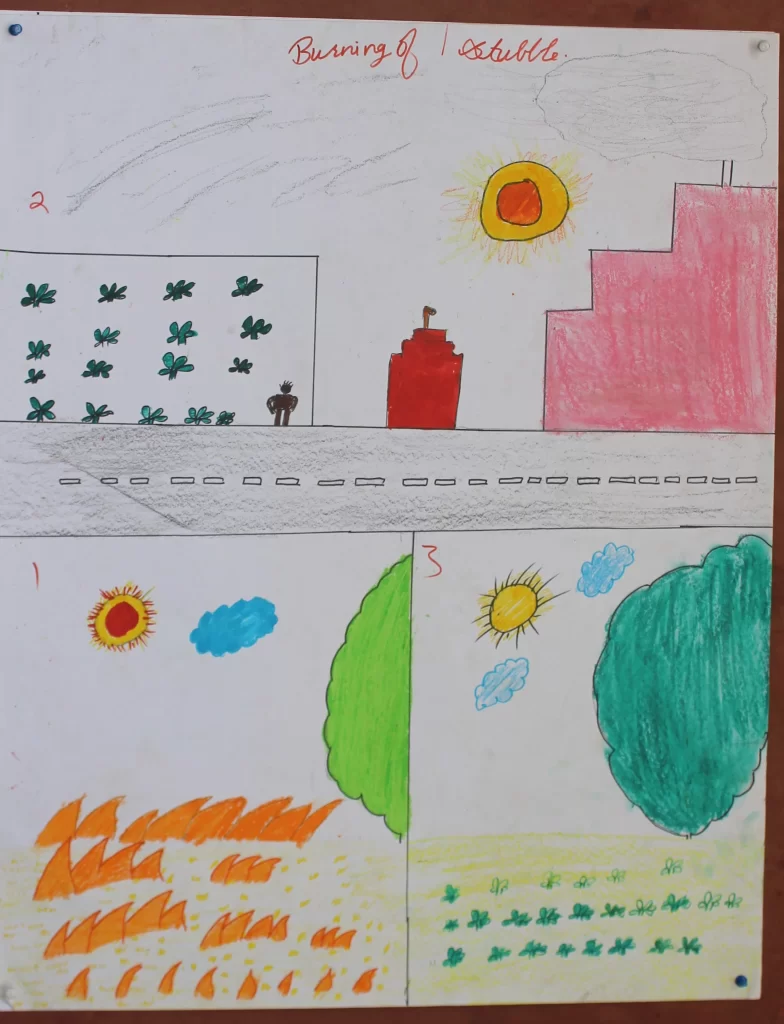
Stubble burning refers to the practice of burning crop residues after harvest to clear fields quickly and prepare them for the next planting season. While this practice may seem convenient, it has negative environmental and health consequences.
Crop residue management is the practice of managing crop residues left in the field after harvest in an environmentally sustainable and beneficial way. Instead of burning crop residues, farmers can use alternative practices to manage them. These include:
- Mulching: Mulching involves shredding the crop residue and spreading it over the field to protect the soil from erosion, retain moisture, and improve soil health.
- Incorporation: Incorporating crop residues into the soil can help to improve soil structure, fertility, and water-holding capacity. This can be done with tillage equipment or through the use of specialized machinery that can incorporate residue directly into the soil.
- Grazing: Grazing livestock on crop residue can help to reduce the amount of residue that needs to be managed and provide a source of food for animals.
- Composting: Composting crop residue can help to create a nutrient-rich soil amendment that can be used to improve soil fertility and plant growth.
By adopting these crop residue management practices, farmers can reduce the amount of crop residue that needs to be burned and thus help to protect the environment and human health. These practices can also support the long-term sustainability of agricultural systems by improving soil health and productivity, reducing the need for chemical fertilizers, and creating new income streams for farmers.
Moreover, governments and organizations can also support farmers in adopting these practices by providing incentives such as financial assistance, technical support, and education programs. By promoting sustainable crop residue management practices, we can reduce the negative impacts of stubble burning and ensure a more sustainable and healthier agricultural system.
